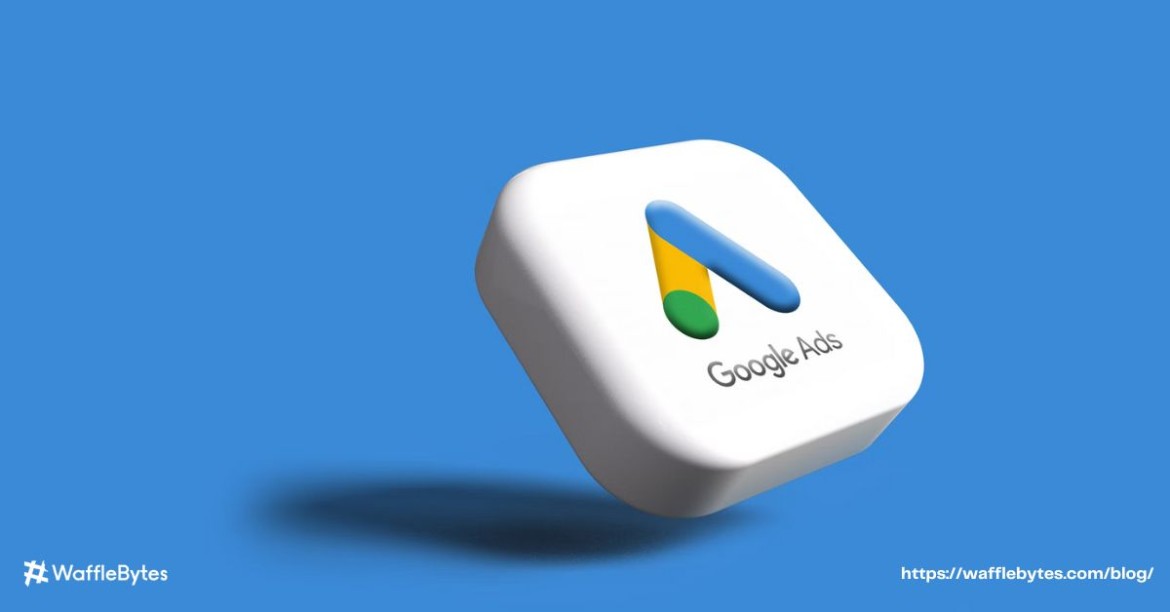Google Ads has become the backbone of digital advertising for businesses of all sizes. Whether you’re a startup aiming to grab initial traction or an established brand scaling performance, bidding strategy plays a crucial role in determining visibility, cost-efficiency, and conversions.
Choosing the best bidding strategy in Google Ads is not about simply spending more; it’s about smart optimization that ensures your ads appear at the right place, at the right time, to the right audience. In this blog, we’ll dive deep into different bidding strategies, how they impact ad visibility, and expert recommendations from WaffleBytes to help you make the most out of your campaigns.
Why Bidding Strategy Matters for Visibility
Google Ads functions like an auction system. When users type in a search query, advertisers compete for visibility. However, the highest bid doesn’t always win. Instead, Google considers Ad Rank, which is determined by:
- Bid amount
- Ad relevance
- Expected CTR (Click-Through Rate)
- Landing page experience
Types of Google Ads Bidding Strategies
To maximize visibility, you need to choose the bidding strategy aligned with your goals. Let’s break them down.
1. Manual CPC (Cost-Per-Click) Bidding
With Manual CPC, you set the maximum bid for each keyword.
- Pros: Full control, useful for experienced advertisers.
- Cons: Time-consuming, not ideal for large campaigns.
- Best Use Case: When testing new campaigns or controlling spend on specific high-value keywords.
2. Enhanced CPC (ECPC)
This is a hybrid model where you set manual bids, but Google automatically adjusts them for conversions.
- Pros: Balance between control and automation.
- Cons: Less effective without historical conversion data.
- Best Use Case: For advertisers with conversion tracking in place but still wanting partial control.
3. Maximize Clicks
This automated strategy aims to get as many clicks as possible within your budget.
- Pros: Increases traffic volume and brand visibility.
- Cons: May attract irrelevant clicks, lower-quality leads.
- Best Use Case: When visibility and awareness are more important than conversions.
4. Target Impression Share
Designed specifically for visibility, this strategy lets you bid to appear at the:
- Absolute Top of Page
- Top of Page
- Anywhere on Page
- Pros: Excellent for brand awareness and dominance in SERPs.
- Cons: Can be costly if competition is high.
- Best Use Case: For campaigns focused on visibility rather than ROI.
5. Maximize Conversions
This strategy uses machine learning to adjust bids and drive the most conversions possible.
- Pros: Fully automated, uses Google’s AI for optimization.
- Cons: Requires sufficient conversion data.
- Best Use Case: For businesses with strong conversion tracking and a goal to optimize ROI.
6. Target CPA (Cost Per Acquisition)
You set the amount you’re willing to pay for a conversion, and Google optimizes bids to achieve it.
- Pros: Keeps acquisition costs predictable.
- Cons: Needs historical data to work effectively.
- Best Use Case: For businesses focused on profitability and scaling.
7. Target ROAS (Return on Ad Spend)
You set a return percentage goal, and Google adjusts bids accordingly.
- Pros: Ensures campaigns remain profitable.
- Cons: Works best with eCommerce or revenue-focused businesses.
- Best Use Case: For businesses tracking revenue-driven conversions.
Best Bidding Strategies for Maximum Visibility
Now that we know the types, let’s answer the key question: Which strategy is best for visibility in 2025?
At WaffleBytes, after analyzing multiple industries and campaigns, we recommend the following approaches:
- Target Impression Share – If your priority is brand visibility, this is the most direct method to appear at the top.
- Maximize Clicks – A solid choice for businesses looking to drive traffic volume quickly.
- Enhanced CPC – A middle ground for advertisers wanting more visibility and conversions without losing control.
- Smart Bidding (Maximize Conversions / Target CPA) – For businesses with strong tracking, this ensures visibility + ROI.
WaffleBytes’ Expert Tips to Boost Google Ads Visibility
- Segment Campaigns by Goal: Use different bidding strategies for brand awareness vs. conversion-focused campaigns.
- Leverage Ad Extensions: Sitelinks, callouts, and structured snippets improve visibility without increasing bids.
- Focus on Quality Score: Higher relevance reduces CPC, allowing more visibility for the same budget.
- Monitor Search Impression Share: Helps you identify how often your ads show compared to competitors.
- Regular A/B Testing: Test different strategies and adjust based on performance.
Common Mistakes Advertisers Make with Bidding
- Using one bidding strategy for all campaigns – Each goal requires a different approach.
- Ignoring conversion tracking – Without it, automated bidding strategies won’t optimize effectively.
- Not adjusting for device & location – Visibility can drop if bids aren’t tailored for where your audience is.
- Chasing top position blindly – Being #1 doesn’t always mean better ROI; sometimes lower positions perform better.
The best bidding strategy in Google Ads isn’t a one-size-fits-all solution. It depends on your business objectives, budget, competition, and data availability. For pure visibility, strategies like Target Impression Share and Maximize Clicks are highly effective. For a balance of visibility and ROI, smart bidding strategies like Target CPA and Target ROAS are ideal.
At WaffleBytes, we help businesses craft customized Google Ads strategies that ensure higher visibility, improved ROI, and long-term growth.
The best strategy for brand awareness is Target Impression Share, as it allows you to appear at the top of search results consistently.
For conversions, Target CPA or Maximize Conversions are highly effective, provided you have accurate conversion tracking in place.
Manual CPC offers control but is time-consuming. Automated strategies like Enhanced CPC or Smart Bidding are better for scaling visibility.
Track Impression Share, CTR, Conversion Rate, and ROI. These metrics show whether your strategy improves visibility and performance.
Yes, you can segment campaigns by goals—using Target Impression Share for brand campaigns and Target CPA for conversion campaigns.

